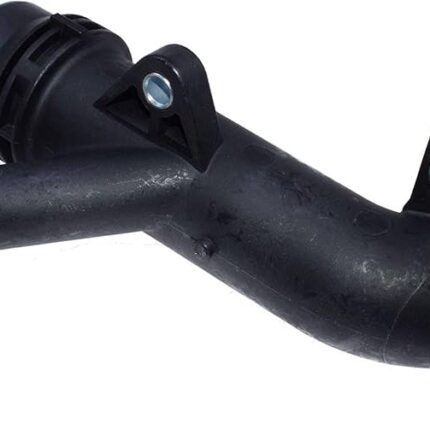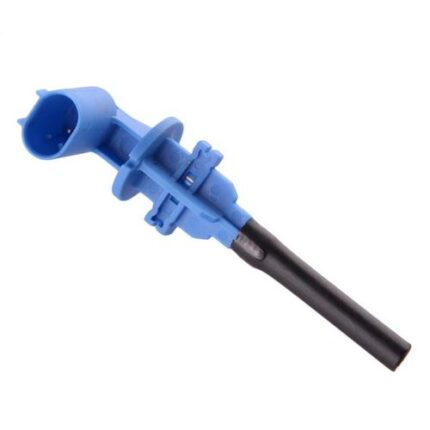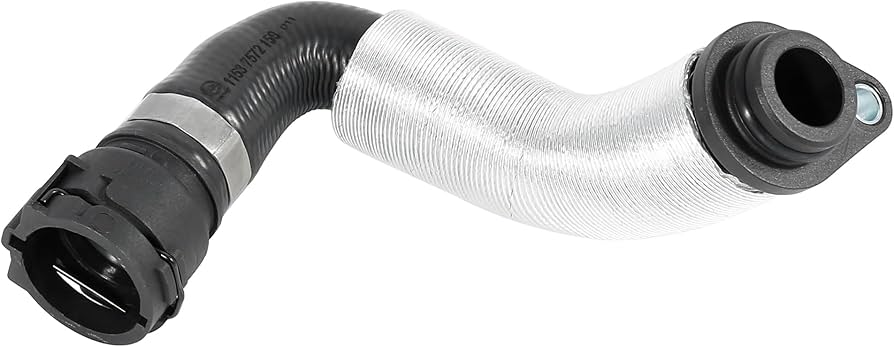-7%
Get BMW 1 Series 120i E88 Radiator Coolant Pipe Hose 11537572159 in Kenya
A cooling hose connector is a critical component in a vehicle’s cooling system, responsible for linking coolant hoses and directing coolant flow between the radiator, engine, and other cooling components. This small but essential part ensures the cooling system operates efficiently, preventing engine overheating and maintaining optimal performance. In this guide, we will explore the functions, types, materials, common failures, maintenance, and replacement of cooling hose connectors in detail.
What is a Cooling Hose Connector?
A cooling hose connector is a fitting that joins coolant hoses together, ensuring the proper circulation of coolant throughout the cooling system. These connectors serve as junctions between various components, such as:
- The radiator and engine
- The thermostat housing and hoses
- The heater core and cooling system
They help maintain a sealed, leak-proof connection, preventing coolant leaks and ensuring consistent coolant flow.
Functions of a Cooling Hose Connector
- Securely Connect Coolant Hoses
- The primary role of the cooling hose connector is to create a tight, leak-proof connection between coolant hoses.
- It ensures coolant circulates properly without loss or contamination.
- Support Efficient Coolant Flow
- Properly installed connectors allow for smooth and unrestricted coolant flow, which helps in maintaining engine temperature.
- Prevent Leaks
- These connectors ensure that coolant remains within the closed-loop system, preventing leaks that could lead to overheating or engine damage.
- Withstand Temperature Extremes
- Cooling hose connectors are designed to endure extreme heat, pressure, and coolant chemicals, ensuring durability over time.
- Enable Easy Maintenance and Replacement
- Many modern cooling hose connectors are designed with quick-connect mechanisms, allowing for faster repairs and replacements.
Types of Cooling Hose Connectors
Cooling hose connectors come in different types based on material, shape, and function.
1. Based on Material
- Plastic Cooling Hose Connectors
- Lightweight and cost-effective
- Found in many modern vehicles
- Can degrade over time due to heat and chemical exposure
- Metal Cooling Hose Connectors (Aluminum, Brass, or Stainless Steel)
- More durable and resistant to heat and pressure
- Commonly used in high-performance and heavy-duty vehicles
- Less prone to cracking but can corrode over time
2. Based on Shape and Function
- Straight Connectors – Used to join two hoses in a straight line.
- Elbow Connectors (90° or 45°) – Designed to direct coolant flow at an angle, often found near tight engine spaces.
- T-Connectors – Used when a single hose needs to split coolant flow into two different directions.
- Quick-Connect Fittings – Feature a locking mechanism for fast installation and removal.
Common Issues with Cooling Hose Connectors
Even though cooling hose connectors are built to last, they are still vulnerable to wear and tear. Here are some common issues:
1. Cracks and Breaks
- Plastic connectors can become brittle over time, leading to cracks and eventual failure.
- Metal connectors may develop stress fractures due to prolonged exposure to vibrations and heat.
2. Coolant Leaks
- Loose connections, worn-out seals, or cracks in the connector can cause coolant leaks, leading to low coolant levels and engine overheating.
3. Corrosion and Rust
- Metal connectors can suffer from oxidation, leading to rust buildup that weakens the connector and affects coolant flow.
4. Clogged Connectors
- Over time, coolant debris, rust, and deposits can build up inside the connector, restricting coolant flow and reducing cooling efficiency.
5. Poor Fitment or Loose Connections
- If a connector is not properly secured or the wrong size is used, it may lead to coolant leaks or pressure loss within the cooling system.
Symptoms of a Failing Cooling Hose Connector
If a cooling hose connector is failing, you may notice the following symptoms:
- Coolant Leaks – Visible puddles of coolant under the vehicle or around the engine bay.
- Engine Overheating – Rising temperature gauge, steam from the engine, or warning lights.
- Low Coolant Levels – Frequent need to top up coolant.
- Hose Disconnection or Loose Fit – Hoses slipping off the connector due to a worn-out seal.
- Sweet Smell from Engine Bay – The presence of coolant leaking onto hot engine components.
Preventive Maintenance for Cooling Hose Connectors
1. Regular Inspection
- Check for cracks, leaks, or discoloration in the connector.
- Look for coolant stains around the connector joints.
2. Ensure Proper Fitment
- When replacing a connector, always use the correct OEM (Original Equipment Manufacturer) part to ensure proper fitment and durability.
3. Check for Corrosion and Buildup
- Metal connectors should be checked for rust and corrosion.
- If signs of buildup are present, clean the connector or replace it if necessary.
4. Replace Aging Components
- If a cooling hose connector is over 5-7 years old, it may be prone to failure and should be replaced during cooling system maintenance.
5. Use Quality Coolant
- Using the right type of coolant helps prevent corrosion and deposit buildup inside the cooling system, extending the life of the connectors.
How to Replace a Cooling Hose Connector
If a cooling hose connector is leaking or cracked, replacement is necessary. Here’s how:
Tools and Materials Needed:
- New cooling hose connector (OEM recommended)
- Hose clamps
- Screwdriver or hose clamp pliers
- Coolant (matching the manufacturer’s specification)
- Drain pan
- Work gloves
Steps to Replace the Cooling Hose Connector:
- Let the Engine Cool Down
- Never work on a hot cooling system. Wait for the engine to cool completely.
- Drain the Coolant
- Place a drain pan under the radiator and drain the coolant from the system to prevent spills.
- Remove the Old Connector
- Use hose clamp pliers to loosen and remove the hose clamps.
- Carefully disconnect the hoses from the old connector.
- Inspect the Hoses and Cooling System
- Check for signs of wear, cracks, or buildup inside the hoses before attaching a new connector.
- Install the New Connector
- Attach the hoses to the new connector and secure them using new hose clamps if necessary.
- Ensure a tight fit to prevent leaks.
- Refill the Coolant
- Pour the appropriate coolant into the system and ensure the correct coolant level.
- Check for Leaks
- Start the engine and let it run to check for any leaks around the newly installed connector.
- Bleed the Cooling System
- If necessary, remove any trapped air from the cooling system by following the manufacturer’s bleeding procedure.
Conclusion
A cooling hose connector plays a crucial role in maintaining efficient coolant flow and engine temperature regulation. Despite being a small part, it has a significant impact on vehicle performance and longevity. Regular maintenance, timely replacements, and using high-quality parts can prevent major cooling system failures.
By understanding how cooling hose connectors function and recognizing early signs of failure, vehicle owners can ensure optimal cooling system performance, prevent overheating, and extend engine life.
Follow us on Facebook for more parts.




Reviews
Clear filtersThere are no reviews yet.